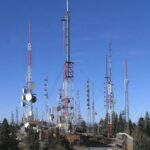My wife tells my all the time that for our 25th wedding (just a few years away) anniversary she wants a facelift. Ideally she would like something that doesn’t involve a scalpel. That narrows the possibilities. Personally, I think my wife looks great — but her desires are echoed by thousands of men and women (most of who – incredibly — are under the age of 45): “…What can be done to slow down or at least erase some of the effects of aging…?
While you ponder that, let me tell you that I read recently where the effects of aging start to become noticeable in our late 20’s. That’s kind of disturbing, but it also explains why so many men and women are going under the knife and needle for facelifts and other kinds of chirurgical procedures at a younger and younger age.
The naturally evolution of “facial re-modeling” has been to try and develop something that didn’t involve cutting and folding the skin. Needles and Botox provided a shirt term solution, but nothing that was permanent. The “next big thing” — is actually already here and getting increasingly popular: the radio frequency facelift or RFF for short.
The radio frequency facelift is known by its trade name “Thermacool” and was first developed by Thermage Corporation of Hayward, California (www.thermage.com) in 2000. The radio frequency facelift is a thermal procedure that uses radio frequency waves to reconstruct the deep tissue layers beneath the skin. RFF is a hot new trend in non-surgical face lifts is fast becoming a popular maintenance technique for people who are not yet ready for a “full” face lift.
Let’s take a brief pause and look at the mechanics of aging. Wrinkles and loose skin can take its toll on a person’s looks. Twenty years ago, aging may have made a man look “distinct” but women unfortunately have never benefited from that term. In fact, these days — the label is pretty blunt: forget about being distinct. You’re just old. Even the healthiest and most active people eventually show signs of aging on their faces. More and more people have tried face lifts over the years to combat wrinkles and skin imperfections. The site www.plastic-surgery.net points out that although often successful, traditional face lifts require minor surgery and prolonged recovery periods. There’s increasing demand for non-surgical techniques to refresh facial appearances. That’s exactly what has made the radio frequency face lift so popular.
First a numbing cream is applied to the individual’s face; then a wand-like radio-frequency tool called ThermaCool TC (short for “tissue contraction”) is passed over the area that needs rejuvenating. These emitted radio waves get past the outer skin layers and deliver heat energy to the muscles and tissues beneath. The heat helps to contract these layers while building up collagen levels. Collagen is a structural component of your skin, like little molecular fibers that hold the fabric of your skin together. Thus, as we age, these fibers become less compact and less organized and your skin becomes loose and saggy.
The overall result of the RFF tightens up the outer layers of skin and reduces wrinkling effects. Since there’s a lot of heat involved, some cooling must be applied to the skin at the same time. Most devices have a cooling mist of water built right into them to keep the skin from burning. (www.health.com points out that as a result many patients experience discomfort, swelling, and skin irritation in the days following their treatment).
The radio frequency face lift was approved by the Federal Drug Administration (www.fda.gov) as a non-surgical treatment for wrinkles and imperfections in facial skin. It is a proven medical procedure that requires no scalpels or sutures. However, as www.infoplasticsurgery.com points out, the effects of a radio frequency facelift are limited compared to a full face lift surgery. That’s because radio energy is not as accurate when attempting to re-sculpt a person’s face. Ultimately, the procedure is more attractive as a maintenance treatment for younger patients who are showing initial signs of aging. By using a radio frequency face lift, many men and women can prolong the need for a full-fledged face lift later on in life.
I have to admit, the RFF seems to have amazing results. Before and after” photos show that RFF treatment can be used for more than just bags under the eyes and crows feet near your temples. RFF seems to be very effective on the sagging skin under the chin as well.
According to www.dermadoctor.com, the radio frequency facelift is also a popular choice for busy professionals who care about their looks. But this popularity comes at a price: although basic procedures usually last lest than 90 minutes, the price for an RFF can range from $1500.00 to $5,000.00. Additionally, although a full recovery can be expected in a few days, the results of the RFF take a bit of time to show fully though. Published reports relate that some results are visible immediately, while full results may take between two to six months to develop as the deep tissue layers heal. And the results are not permanent. So plan on going back for a repeat visit six to eight months later.
The radio frequency facelift. No scalpels or needles and for the most part painless. For many individuals it may be just what the doctor ordered.





